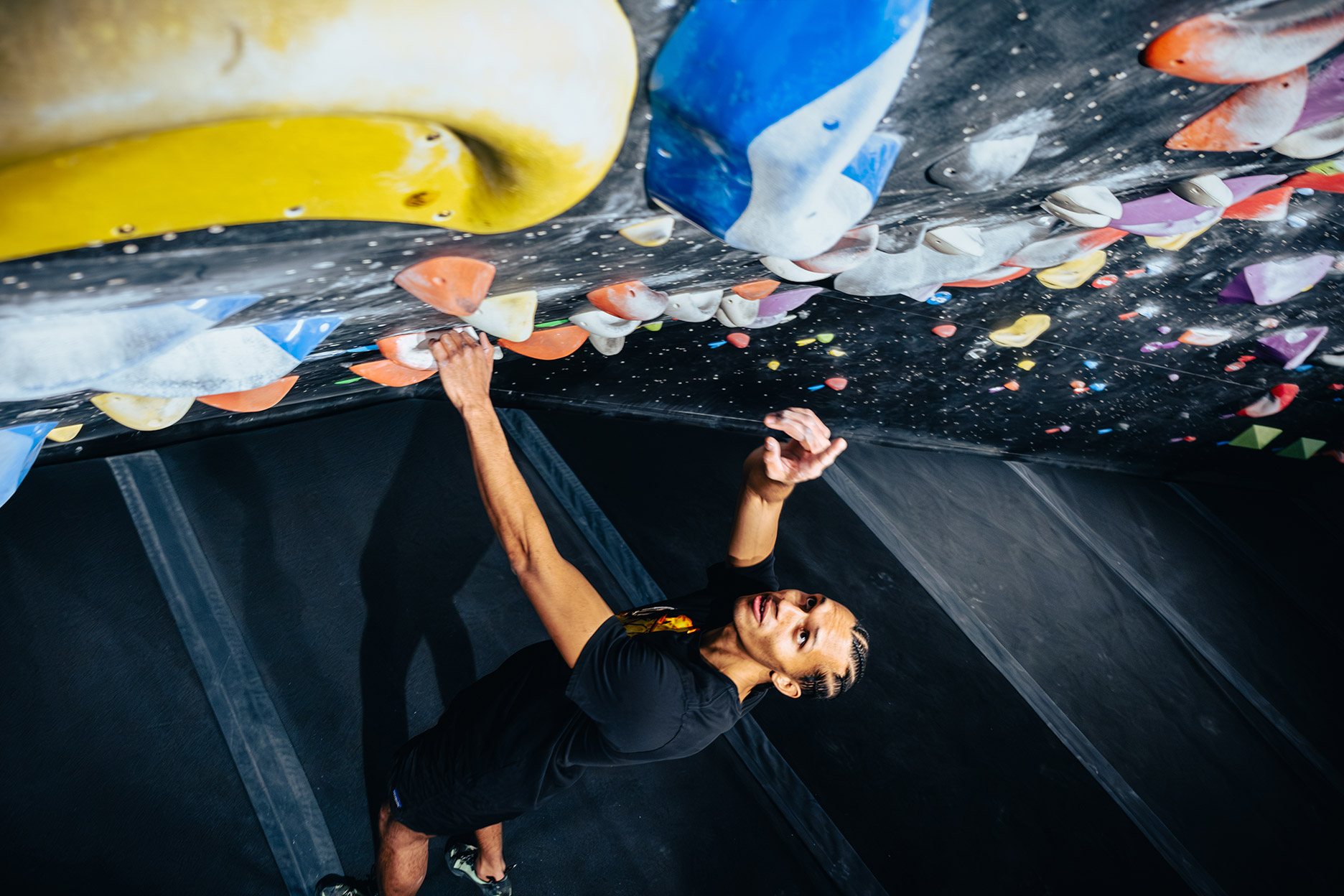Perhaps the cold conditions have pushed you toward the indoor walls, or maybe your diet mainly consists of eating plastic holds… Whatever the case, it’s likely that the coming months will be spent indoors, climbing problems created by crazy setters whose only goal is to come up with heart-breaking sequences. Don’t despair, here are three tips to help you crack the mysteries of boulder problems!
Look at what’s in front of you
You’re at the Bloc Shop, facing new problems. You want to send the V4 on the purple holds. Before you leap into action, take a good look at all the holds – for hands and feet. You’ll already have a rough idea of the sequence. Well-spaced holds indicate a dynamic move. Small crimps that are close together with bad feet suggest you’ll need to squeeze hard and maintain tension. Few or no feet might mean a heel or toe hook.
Make a sequence for yourself
The second step, even before attempting the problem: come up with a sequence, an attack plan. When you’re on the third hold, where will you go next? How will you position your left foot? And your right hand? You don’t need to create a five-year plan. The idea is to think about how to move your body (your body!) through space, and to climb according to your strengths and weaknesses. If your sequence doesn’t work, no worries. See what went wrong, make a mental note, and adjust for the next problem.
Watch others climb!
I don’t have much credibility as a climber: I often watch people climb problems in the gym, which gives me a good idea of how I might chain it together. Except for Sébastien Lazure… Watching someone climb a problem is a goldmine of information. You’ll get a pretty good sense of which holds are good, where the tough spots are, and what works or doesn’t. That doesn’t mean the problem will necessarily be much easier, but you’ll start with a good idea!
Bonus: Reading on the Kilterboard
Walls like the Kilter are uncharted climbing objects (UCOs). You can clearly see all the holds. But the sequence itself may not be as simple. Two tips. The first, very simple: you can often find the sequence already laid out for many problems because you’ll find a video sequence. Now, you just need to execute it (easier said than done)! Second tip: think ‘Kilter’: the moves are generally long, quite dynamic, with funky foot and hand sequences. Look at the problem and try to figure out how to apply this logic to your current Nemesis. Good luck!


